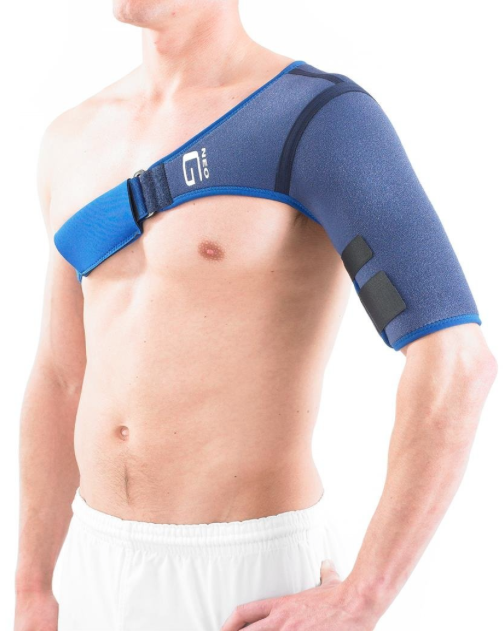Shoulder support braces are medical devices designed to assist the patient’s shoulder by supporting the muscles and rotator cuff area through load sharing, which starts from the chest area opposite of the injured shoulder. This kind of support posture device typically consists of elastic straps that protect the injured shoulder by wrapping the arm and chest area, thereby leveraging support on the injury throughout the upper body. A shoulder brace is a tool used for preventing future dislocations in the shoulders, too, through excess movement.
Use of Shoulder Braces
When a person suffers shoulder injury due to dislocation or shoulder impingement, a back and shoulder brace can be used for supporting the shoulder socket area, which helps to reduce some discomfort. This support brace securely compresses the shoulder area, providing adequate support.
When the patient strains the shoulder area, the shoulder brace is a beneficial tool for providing rest and support to the injured area, which will allow sufficient time for healing.
However, with the support it possibly provides to injured patients, using posture shoulder braces also has its downsides. A common side effect of injury to the shoulder area is the frozen shoulder syndrome. This happens when an individual injures the shoulder area, and the pain is mitigated by reducing the usage of the shoulder in general.
The frozen shoulder syndrome occurs when scar tissue develops around the injured area, which may require surgery by the attending physician for repair. When a patient is required to wear a shoulder brace through rehabilitation, it is important to continue daily shoulder exercises and not allow the area to become stiff.
The shoulder brace is made as a temporary solution as it attempts to keep the muscle from developing additional strains that aggravate the earlier injury. This should be considered a device to assist in the management of pain as well as support for the shoulder muscle area in general. Typically, shoulder braces and slings are used for less complex injuries that do not require surgical intervention.

Typical Uses Of Shoulder Braces And Slings
Many factors are used to identify whether or not a patient needs to wear braces. In most cases, a shoulder brace is only required for a minimum of few days or a maximum of two weeks. The exact amount of time a patient needs to wear them depends upon the severity of the injury.
-
Support from injury
Support of an injured limb is a vital step
